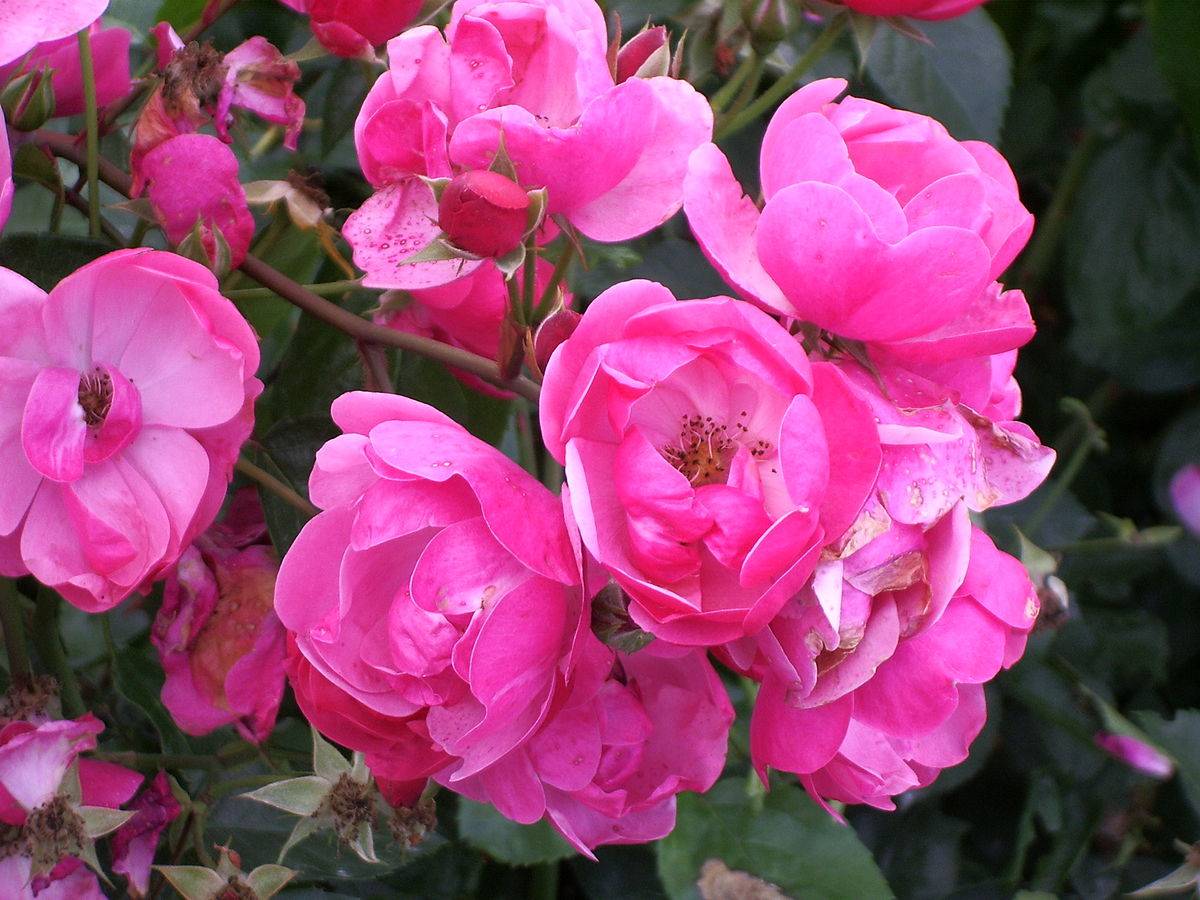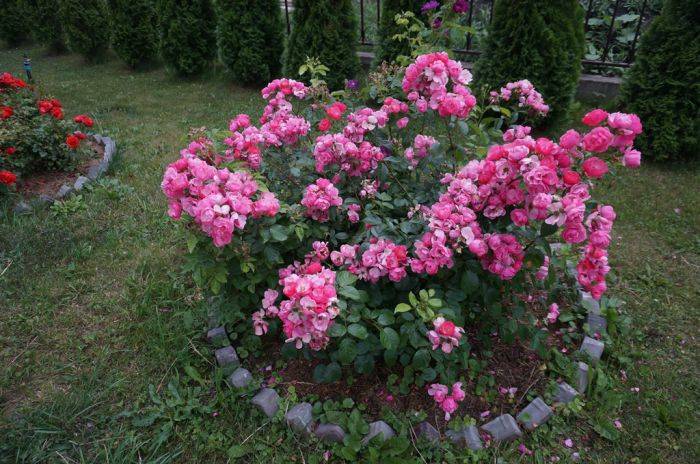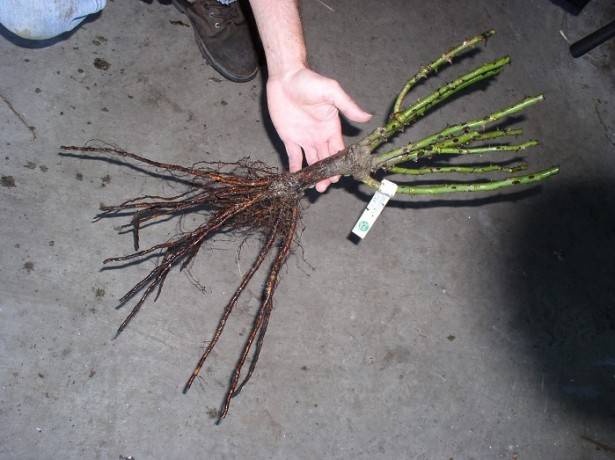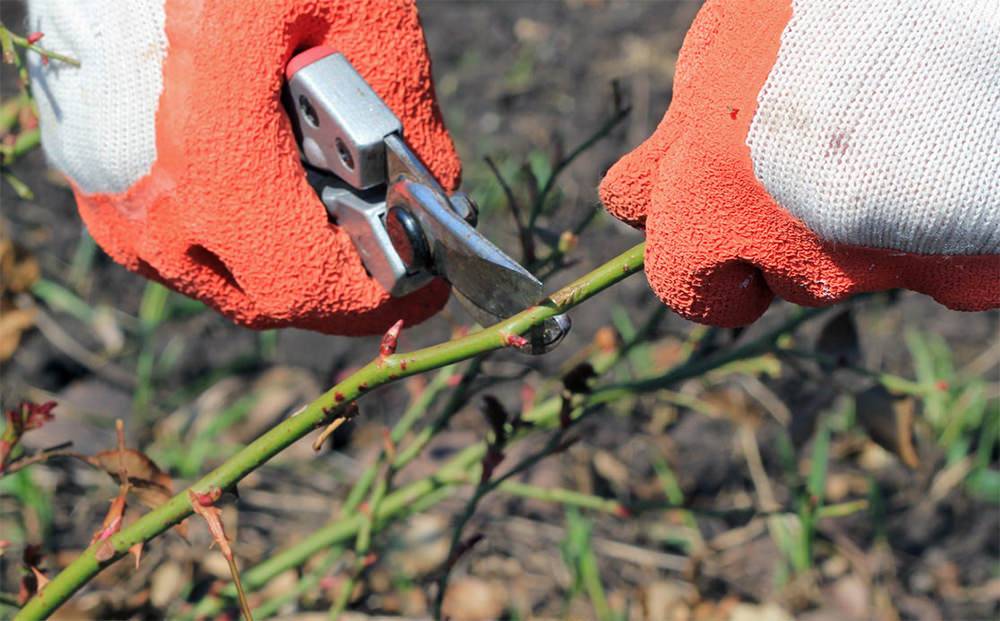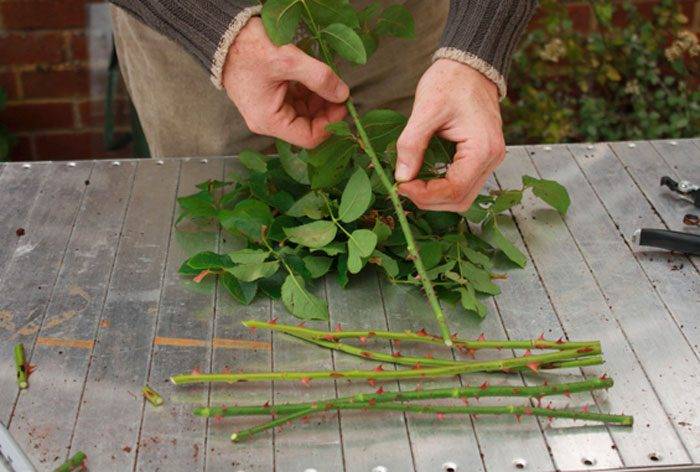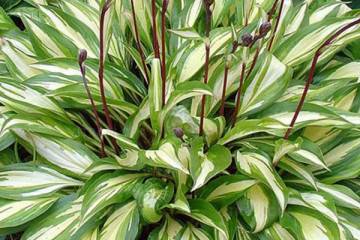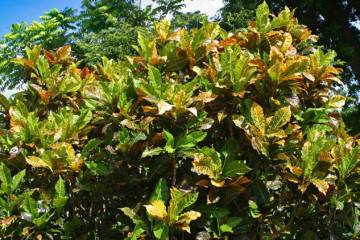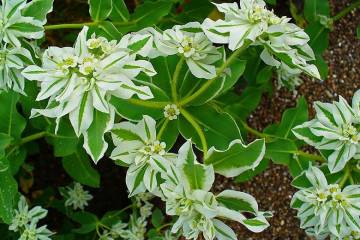Rose Angela (Angela) - characteristic of the variety
Content:
Rose Floribunda Angela saw the world in 1984. It happened in Germany thanks to the breeder R. Cordes. The scientist crossed tea-hybrid and polyanthus roses, as a result of which a profusely flowering bush appeared.
Brief description of the variety
Angela's description is very similar to other roses that truly deserve the royal title. The main advantage of the flower is that the variety is excellent for forcing. In addition, the rose has excellent external data, which will definitely not leave indifferent any gardener:
- the bush reaches 1.5 m in height, and 90 cm in width;
- flower diameter about 10 cm;
- has a mild aroma;
- delicate pink petals along the edges have crimson edging;
- buds form inflorescences of 1-5 pcs., thanks to them, the whole bush seems to become pink.
Advantages and disadvantages of the variety
The advantages of this variety include:
- the ability to adapt to the climate in which the flower grows;
- on warm days, the plant grows rapidly and throws out many flowers;
- the bushes are distinguished by good frost resistance, so in mid-latitudes they can not even be covered for the winter;
- cut flowers stand in a vase for a long time;
- a pleasant and delicate aroma emanates from the bush;
- roses are resistant to a variety of diseases;
- do not need frequent watering, it can be done about once every 7 days.
But this queen of the garden also has several disadvantages:
- in latitudes with a cool climate, the plant does not grow as quickly and blooms profusely as in hot regions;
- the entire stem is covered with small but dense thorns;
- the variety is very picky about the soil. If he does not like the soil, then he can not expect a violent flowering;
- needs feeding;
- loves good lighting, without it it can wither and even die.
Use in landscape design
In landscape design, the Angel's scrub rose is simply irreplaceable. It is well suited both for decorating city flower beds and for summer cottages. This variety is well suited for border planting and rose gardens. It can be planted in containers and flowerpots.
Growing a flower
This queen of flowers loves drainage soil with an acid-base reaction of at least 5.6 and no more than 7.3 pH. Therefore, in order for a rose to grow and develop well, it needs to choose a special planting site, soil and provide proper care.
Gardeners grow a rose with seedlings or layering, only in this way can the varietal characteristics of the flower be preserved.
This species should be planted in early spring and up to mid-spring at the most. Do not be afraid that the bush will freeze, it is not afraid of spring frosts.
Seat selection
Rose loves fresh air and lots of light. Therefore, its landing site should be open and sunny. Only in such conditions it will be possible to achieve lush flowering and full development.However, the sun should not shine on the plant all day, the rose needs to be in partial shade for several hours, otherwise the sun's rays can burn young buds. They will get burned or crumble.
It is better to plant a flower on a dais so that there is no stagnation of water, because due to excess moisture, the plant can rot its roots.
How to prepare the soil and flower for planting
The pit for Angela's planting should be prepared in 7 days. It should be at least half a meter wide and about 45 cm deep. If we are talking about clay soil, then the hole should be made about 70 cm deep, since it is necessary to pour a drainage layer on the bottom.
Before planting, you also need to prepare the seedlings themselves:
- Soak them for a day in a bucket of water.
- Treat with one of the growth stimulants, for example, root root.
- Shorten roots to light cuts. You may even need to trim to 10 cm.
Planting procedure step by step
The planting process is practically no different from planting other plants:
- In the dug hole, the roots are straightened.
- The seedlings are buried in the ground so that the grafting site is immersed by 8 cm.
- At first, the hole is not completely covered with earth. Having poured a little more than half, the flower needs to be watered, this will take about 2.5 liters of water. Then the earth is poured to the end and watered again.
- The soil is well mulched around the roses, it is necessary that there is no depression around the stem, otherwise water will stagnate, which is highly undesirable.
Plant care
Rose Angela is undemanding in terms of care, but you still need to follow some recommendations from experienced gardeners. It is imperative for good air circulation to loosen the soil. However, it is not necessary to plow the ground very deeply, since the roots of a rose can lie close to the surface. Some growers argue that you also need to mulch the hole. The mulch will retain moisture and prevent weeds from growing.
Watering rules and humidity
Rose prefers moderate watering. It must be carried out when the top layer of the soil dries out. During the period of active growth, Angela especially needs watering. After all, she needs strength and nutrients for the pasture of new foliage and shoots, as well as the formation of buds.
Top dressing and soil quality
A well-drained and moderately nutritious soil is suitable for growing Angela. It must include sand, clay and humus. These ingredients will help loosen the soil and make it more nutritious. Also, manure or compost must be added to the soil in advance.
Top dressing is very important for a rose. They are brought in twice a season. Fertilization begins in the spring and ends before flowering.
Pruning and replanting
Angela needs sanitary and formative pruning. They are produced in the spring, before the leaves appear on the shrub. It is necessary to remove all broken and dry branches, as well as those that grow inside the crown.
Roses often grow in such a way that they have to look for a new place. If there is enough space for the roots, then the flower will be able to fully develop. It is better to replant these roses in early spring or autumn. In spring, frosty weather will be left behind, and at the beginning of autumn, frosts will not begin yet. Before the arrival of winter, the roses will have time to get stronger and take root.
With a strong desire, you can transplant a flower in the summer, but for this you will need to wait for cloudy days so that the plant does not die due to exposure to hot sunlight. Also, during transplantation, the culture is provided with good watering.
Features of wintering a flower
Angela is frost-resistant, but in latitudes with a harsh winter climate, she still needs shelter. It is possible not to insulate roses only in the south of the country.The bush must be covered with soil or peat, creating a tubercle of about 20-30 cm. The space between the branches is filled with spruce branches, and a cover made of non-woven material is put on the plant on top.
Blooming rose
Angela pleases with her color from the beginning of June to the end of September. Even the first frosts cannot spoil the beauty of this plant. The variety blooms continuously and immediately throws out several flowers.
Rose Angela, like most of its relatives, begins to prepare for winter holidays in the fall, and with the arrival of spring, the plant pleases those around it with lush foliage and abundant flowering.
During flowering, the rose needs to be fertilized once every 3 weeks, only the top dressing should not contain nitrogen, otherwise it will stop throwing out the buds. When the plant has finished blooming, it will begin to prepare for winter. During this period, all feeding is stopped.
What to do if it does not bloom
Most often, roses do not bloom due to improper care of them. If they lack nutrients or they are in excess in the soil, then the plant may have problems. Also, sometimes a variety of pests or diseases can affect the appearance of buds. Although this happens much less frequently, as the Angel rose is disease resistant.
Flower propagation
For propagation, cuttings or layering should be used.
The grafting method is very simple and even a beginner can handle it. It is advisable to take cuttings from young plants that have just had their first flowering. They are cut 15-20 cm long with 3 or 4 buds. Layers are taken in spring or autumn and immediately planted in pre-prepared pits. After planting around the bush, you need to constantly maintain moisture.
Diseases, pests and ways to control them
This variety is very resistant to diseases, especially well resistant to powdery mildew. However, if the plant is not properly cared for, it will weaken its immune system and increase the chances of developing the disease.
- Chlorosis. It manifests itself if there are not enough nutrients in the soil, such as iron, magnesium, zinc, boron, etc. Leaves acquire a white or cream color and eventually disappear. To avoid this disease, you need to apply fertilizers in a timely manner and in the required amount.
- Marsonina is a fungal disease that causes leaves to turn black and dry. To avoid the spread of the disease, it is necessary to collect and burn the affected foliage, and also before the buds bloom, they must be sprayed with special insecticides.
- Cancer. The causative agent of this disease lives in the soil and, if the bush is mechanically damaged, it easily affects the plant. At first, the stem turns yellow, over time it darkens, and the leaves become covered with brown spots. The affected shoots must be removed, then the plants must be treated with special fungicides.
In addition to diseases, owners of roses may also encounter pests that do not mind taking advantage of the sap of these plants.
- Rose aphid. The insect is very difficult to notice in the early stages, since it hides on the underside of the leaves. In the winter, adults lay eggs, and in the spring babies appear from them, which attack young shoots, sucking all the juices from them. Because of this pest, the leaves of the plant are deformed, the buds do not open, and the flower becomes so weak that it may not even survive the winter.
- Spider mite. It is a very small parasite that is difficult to see with the naked eye. However, its presence can be easily guessed due to the cobweb. The tick sucks out all the vital juices from the plant, and if it is not stopped in time, the rose will die. Fitoverm will help to cope with the parasite.
- Leafworms are caterpillars that attack young shoots, they like to wrap themselves in the leaves of the plant, which is why they got their name. If there are few of them, then the caterpillars can be collected by hand, and if they have already managed to multiply well, then chemical preparations should be used.
You can talk about Rose Angela for a long time, since she has a lot of advantages, but the most important thing is her extraordinary appearance. The bush resembles a pink hill, from which it is impossible to take your eyes off, so the owner will have something to show and how to please the guests. This flower will become the center of attention. It will stand out both in the summer cottage and in the rosearium against the background of the most exquisite plants.
